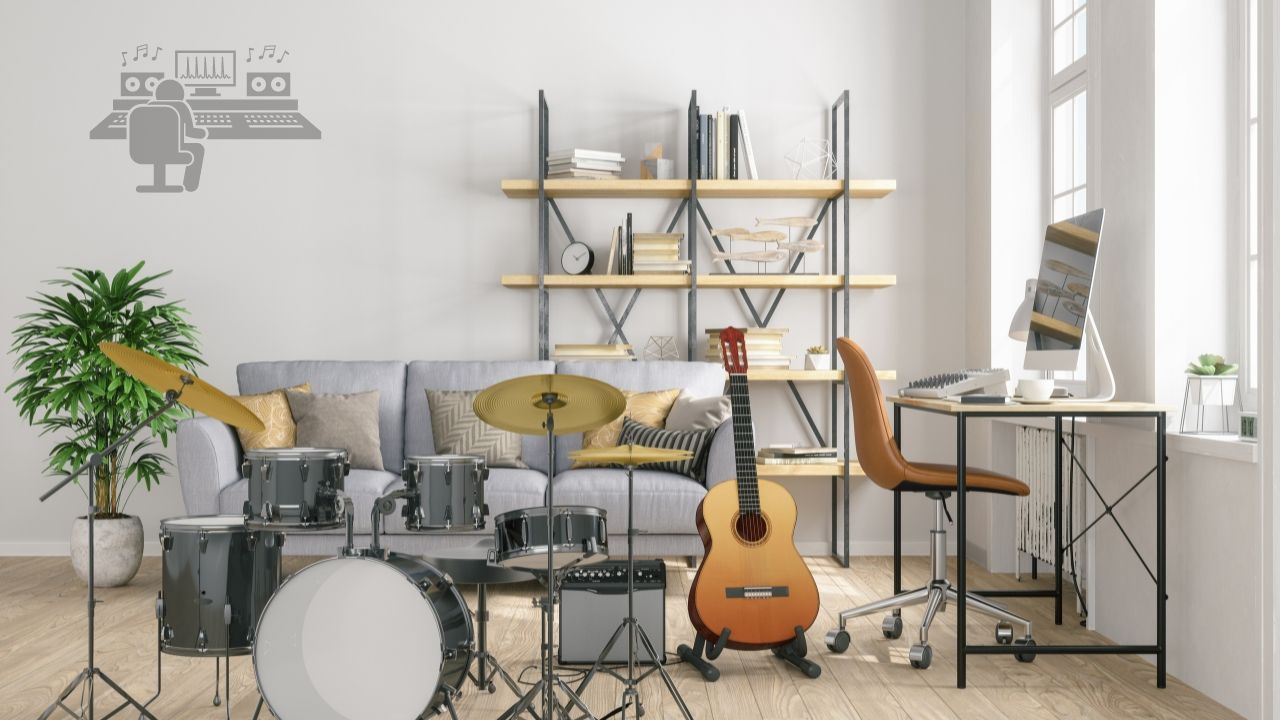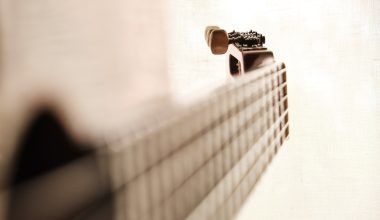Creating a music room in your home is a fantastic way to immerse yourself in your passion for music. Whether you are a professional musician, a music teacher, or simply a music enthusiast, having a dedicated space for music can significantly enhance your experience. This blog will guide you through the essential steps and considerations for creating a music room that caters to your needs and enhances your musical journey.
Why Create a Music Room?
Having a dedicated music room provides a space where you can practice, compose, and enjoy music without distractions. It allows you to focus, practice effectively, and store your instruments and equipment safely. Moreover, a well-designed music room can improve the acoustics of your music, making your practice sessions and recordings sound better.
Planning Your Music Room
1. Identify the Purpose
Before you start setting up your music room, determine its primary purpose. Will it be used for practicing, recording, teaching, or a combination of these activities? Knowing the purpose will help you decide on the necessary equipment and room layout.
2. Choose the Right Location
Select a room in your house that is quiet and away from high-traffic areas. This will minimize external noise and disturbances. A basement or an attic can be ideal locations for creating a music room due to their isolation from the rest of the house.
3. Room Size and Shape
The size and shape of the room can affect the acoustics. A rectangular room with higher ceilings usually offers better acoustics than a square room. Ensure the room is spacious enough to accommodate your instruments and equipment without feeling cramped.
Soundproofing and Acoustic Treatment
1. Soundproofing
To prevent sound from leaking out and external noises from entering, soundproofing is essential. This can be achieved by adding mass to the walls, using double-glazed windows, and sealing any gaps or cracks. Heavy curtains and carpets can also help in reducing sound transmission.
2. Acoustic Treatment
Acoustic treatment involves improving the sound quality within the room. This can be done by using acoustic panels, bass traps, and diffusers to manage sound reflections. Proper acoustic treatment ensures that the sound within the room is clear and balanced, making your practice sessions more effective.
Essential Equipment for creating a music room
1. Musical Instruments
Depending on your needs, ensure you have the necessary instruments in your music room. This could include guitars, keyboards, drums, or any other instruments you play.
2. Recording Equipment
If you plan to record music, invest in good quality recording equipment. This includes microphones, audio interfaces, studio monitors, and headphones.
3. Furniture
Comfortable seating and stands for your instruments are essential. You may also need a desk for your computer and recording equipment.
4. Storage Solutions
Proper storage for your instruments and accessories is crucial to keep your music room organized. Use shelves, racks, and cases to store your equipment safely.
Setting Up Your Music Room
1. Layout and Organization
Organize your music room in a way that everything is easily accessible. Place your instruments and recording equipment in convenient locations. Ensure there is enough space to move around and practice comfortably.
2. Lighting
Good lighting is essential in a music room. Use a combination of natural and artificial lighting to create a comfortable environment. Adjustable lighting can help set the mood for different activities, such as practicing or recording.
3. Decorations
Personalize your music room with decorations that inspire you. This could include posters of your favorite artists, album covers, or any other music-related items.
Maintaining Your Music Room
1. Regular Cleaning
Keep your music room clean and dust-free to protect your instruments and equipment. Regular cleaning will also make the space more inviting and pleasant to use.
2. Equipment Maintenance
Regularly maintain your instruments and recording equipment to ensure they are in good working condition. Follow the manufacturer’s guidelines for maintenance and servicing.
Advanced Tips for Creating a Music Room
1. Installing a Home Studio
For those who are serious about recording music, installing a home studio within your music room can be a game-changer. This involves setting up a digital audio workstation (DAW), soundproofing the room, and investing in high-quality microphones and monitors. A well-equipped home studio can provide you with the freedom to create professional-quality recordings without leaving your home.
2. Acoustic Panels and Bass Traps
Investing in acoustic panels and bass traps can make a significant difference in the sound quality of your music room. Acoustic panels help to absorb sound reflections, reducing echo and reverb. Bass traps, placed in the corners of the room, help to control low-frequency sounds, creating a more balanced sound environment.
3. Creating a Comfortable Environment
A comfortable music room is essential for long practice sessions. Consider adding a comfortable chair or couch, a small refrigerator for drinks, and a fan or heater to regulate the temperature. Creating a pleasant environment will make you more likely to spend time in your music room and enjoy your practice sessions.
Budgeting for Your Music Room
1. Determine Your Budget
Before you start purchasing equipment and making renovations, determine your budget. Creating a music room can be expensive, but it’s important to prioritize your spending based on your needs and available funds.
2. Prioritize Essential Items
Start with the essential items such as instruments, basic soundproofing materials, and recording equipment. As your budget allows, you can gradually add more advanced equipment and make further improvements to your music room.
3. DIY Solutions
Consider DIY solutions to save money. For example, you can create your own acoustic panels using affordable materials or repurpose old furniture for storage. There are many online resources and tutorials that can guide you through DIY projects for your music room.
Case Studies: Inspiring Music Rooms
1. The Home Studio of a Professional Musician
Many professional musicians have home studios that are both functional and inspiring. For example, John, a guitarist and songwriter, converted his basement into a fully-equipped music room. He installed soundproofing, acoustic panels, and a home studio with high-quality recording equipment. John’s music room not only serves as a practice space but also as a recording studio where he produces his albums.
2. A Music Teacher’s Dream Room
Sarah, a music teacher, transformed a spare bedroom into a music room where she teaches her students. She equipped the room with a piano, guitars, and various percussion instruments. Sarah also installed a whiteboard for music theory lessons and a comfortable seating area for parents to wait during lessons. Her music room is a welcoming and educational space that enhances her teaching experience.
3. The Enthusiast’s Escape
For Jane, a music enthusiast, creating a music room was about having a personal retreat where she could enjoy her passion. She turned her attic into a cozy music room filled with her favorite instruments, a vinyl record collection, and posters of her favorite bands. Jane’s music room is a personal sanctuary where she can escape from the daily grind and immerse herself in music.
Common Mistakes to Avoid
1. Ignoring Acoustics
One of the most common mistakes when creating a music room is ignoring the acoustics. Poor acoustics can ruin the sound quality and make it difficult to practice effectively. Invest in acoustic treatment to ensure your music room sounds great.
2. Overcrowding the Room
Avoid overcrowding your music room with too much equipment and furniture. A cluttered room can be distracting and limit your movement. Keep the room organized and only include essential items.
3. Skimping on Soundproofing
Soundproofing is crucial for a music room, especially if you live in a shared space. Skimping on soundproofing can lead to noise complaints and distractions. Invest in proper soundproofing materials to create a peaceful environment.
The Benefits of a Dedicated Music Room
Having a dedicated music room offers numerous benefits. It provides a quiet and focused environment for practicing, improves the acoustics of your music, and keeps your instruments and equipment organized. A well-designed music room can also inspire creativity and enhance your overall musical experience.
Tips for Maximizing Your Music Room’s Potential
1. Regularly Update Your Equipment
Technology is constantly evolving, and so is music equipment. Regularly updating your equipment can help you stay current and improve your music production quality. Keep an eye out for new instruments, software, and accessories that can enhance your music room.
2. Utilize Online Resources
Take advantage of online resources to learn new skills and techniques. There are countless tutorials, courses, and forums available that can help you improve your playing, recording, and production skills. Incorporate these resources into your practice routine to maximize your music room’s potential.
3. Collaborate with Other Musicians
Your music room can also serve as a collaborative space where you can work with other musicians. Invite friends or fellow musicians to jam, write, or record music together. Collaborating with others can provide new inspiration and help you grow as a musician.
Conclusion
Creating a music room is a rewarding project that can enhance your musical experience. By following the steps outlined in this guide, you can design a space that is functional, comfortable, and inspiring. Whether you are practicing, recording, or teaching, a well-designed music room can make all the difference. Remember to prioritize soundproofing and acoustic treatment, invest in essential equipment, and personalize your space to reflect your musical style.
For further reading, explore these related articles:
- The Impact of Music Distribution on Artist Visibility
- Common Mistakes to Avoid in Music Distribution
- How to Distribute a Song
For additional resources on music marketing and distribution, visit Deliver My Tune.






